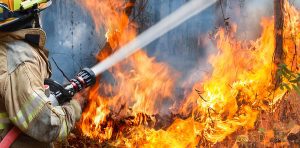
The Science is in: Climate Change is Having an Impact
In a recent interview with NBC, Daniel Swaim, a climate scientist at the National Center for Atmospheric Research and at UCLA, shared just how bad the wildfire situation has become. “It’s not so much things are worse because it has warmed a couple degrees because of climate change. It’s really a cumulative effect in that it’s changing the landscape. Climate change is affecting how dry the vegetation is, and that affects how fast the fire spreads. You’re getting longer periods of the year when you get these fires. We’re literally burning the candle at both ends.”
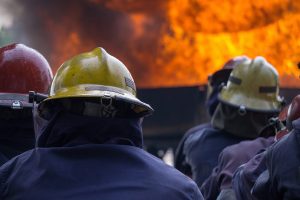
How We Build Our Homes in the United States
That one question leads me to my point. It may not be entirely about where we build, although I do see the importance of that consideration. Perhaps we need to consider more closely how we build. We know that the fire resistance of straw bale walls is far superior to conventional construction; however, bale homes make up only a small fraction of residential construction around the world. We also know that straw bale homes have excellent resistance to high winds and the damage that comes with hurricanes and tornados. Further, we know that straw bale walls far outperform conventional wall systems in seismic events. We know that bale homes are much more energy efficient than conventional housing. Finally, we know that straw bale walls don’t contain all of the toxins that conventional homes do. The facts are in: straw bale walls are an amazing building material with benefits for almost every location and solutions to almost every natural disaster event we currently live with. So why are straw bale homes not more mainstream?

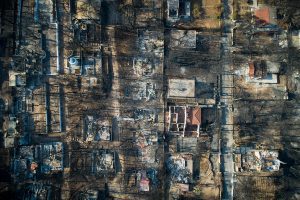
Why the Fire Resistance of Straw Bale Walls is Superior
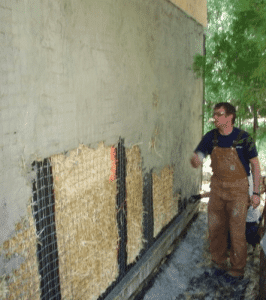
Couple the excellent fire resistance of straw bale walls with intelligent planning and wildfire preparation on the property, and you’ll have a very defensible home. This is to say that, although straw bale walls received very impressive results in ASTM testing, the wall assemblies themselves are not enough to fully protect you from wildfires. You need to consider your roofing material, roof and foundation ventilation systems, proximity to fuel sources (standing timber, tall grass, wood piles, etc), and other details in order to provide the best results possible. In line with that, why would you go through all of the work to create a defensible space and then build a home of wood sticks and chimneys? To me, that’s putting the weakest link in the middle of a well protected space.
ASTM Testing Results
The ASTM testing that took place in 2006 to investigate the fire resistance of straw bale walls was a huge step forward for straw bale construction. The results were very impressive, and proved on the national, unbiased stage what we as builders already knew about straw bale construction. You can learn more about those tests by watching the following video produced by our friends at the Ecological Building Network.
There are, of course other fire resistant options out there, like insulated concrete forms (ICF), but those come with their own challenges to our environment. I would argue that the challenges far outweigh the benefits for the long term goal of a healthy planet. For example, it’s true that concrete has a high level of fire resistance, but it’s also true that concrete is a major contributor to carbon emissions that are negatively impacting the climate. Protecting yourself by using a product that ultimately raises the danger levels by driving climate change is not a viable option in my opinion. We need to build in ways that protect our immediate investment, but also provide a path forward to decreased impacts on the environment. Straw bale construction does just that.
More Evidence
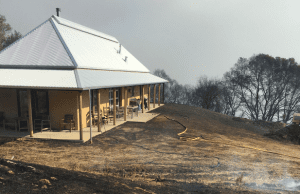
You may or may not be concerned about wildfires in your immediate future. If, however, you plan to build a home in the coming years, I strongly encourage you to consider how the changing climate may ultimately impact your home. Just because you don’t live in a drought-prone area today doesn’t mean that will always be the case. Consider that when most people think about Oregon, they think about rain. Now consider that Oregon is ranked number 7 in wildfire prone states by Verisk Wildfire Risk Analysis. Things are changing, and your best bet is to prepare for that change.
Come Help Build a Home for Fire Victims in Colorado

Want to give some first hand help to fire victims? My friend Carie’s parents (72 and 83 years old) lost their home in June of 2018 to one of the largest wildfires ever to hit the state of Colorado. I’ll be teaching a workshop in Fort Garland, CO (September 15- 21, 2019) where we will build them a new, fire resistant STRAW BALE home. You can learn more about workshops like this one where we helped rebuild this family’s home by clicking HERE. We will need as many hands on deck as possible, so please share the event with your friends and family. Together, we can help ease the pain that comes with the total loss of a wildfire for at least one family.



2 Responses
I rebuilt a home in the san bernardino.ca. mountains. The old home was built of wood frame. The old home burnt down in 2003. The new home is structural steel frame with strawbale infill. The problem is I can’t get insurance.
Hi La Verne, I’m sorry to hear about your insurance coverage struggles. Can you provide more details on why they’re not insuring you? I’d like to understand the situation better.